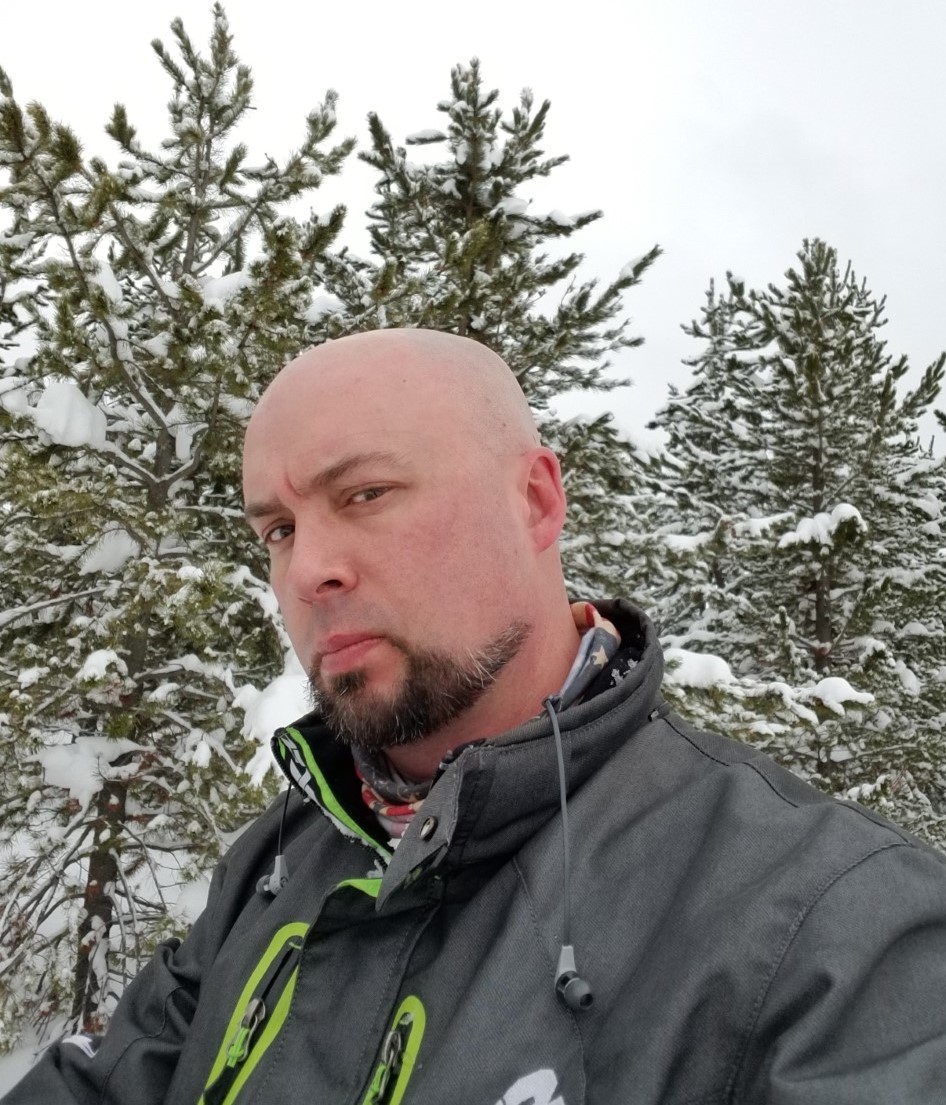
Joshua Daw
Sensors for Nuclear Research Reactor Experiments
Joshua Daw
Principal Researcher at the Idaho National Laboratory (INL)
Recently, nuclear energy has seen a recent resurgence in interest as a low carbon-footprint alternative to fossil fuels for energy production. Advancing this technology beyond the limits of the current fleet requires extensive testing and development of new accident tolerant fuels and advanced reactor concepts. Testing of new fuels for new concepts requires sensors capable of operating in extremes of temperature, pressure, and radiation in multiple chemical environments and at extreme timescales. This tutorial will describe the challenges facing in-core instrument development and many of the sensors under development and in use at INL.
Dr. Joshua Daw is a Principal Researcher at the Idaho National Laboratory (INL) where he leads ultrasound and acoustic sensor development and deployment efforts for in-reactor use. Dr. Daw has over a decade of experience developing sensors of multiple types (thermoelectric, thermal property measurement, fiber optic, ultrasonic, mechanical, etc.) for monitoring of irradiation experiments. Dr. Daw has authored or co-authored 17 peer reviewed journal publications and 37 peer-reviewed conference papers and is the inventor/co-inventor for 10 invention disclosures/patents on high temperature testing and in-core instrumentation. He was awarded the 2013 INL Laboratory Director’s Exceptional Engineering Achievement Award for his work on in-core ultrasonic sensor development and is a 2019 R&D 100 award recipient. Outside of work, he enjoys golf, fishing, skiing, snowmobiling, and motorcycling.

Pasquale Arpaia
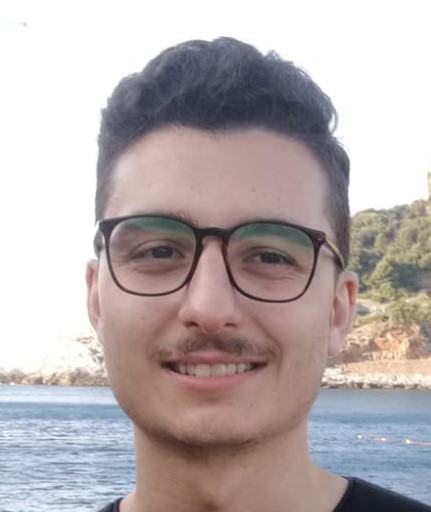
Antonio Esposito
Telemonitoring systems based on Brain-Computer Interfaces and Augmented Reality in smart industry
Pasquale Arpaia and Antonio Esposito
Augmented Reality (AR) is a technology that overlaps computer-generated perceptual information with actual world, in order to enhance human perception of the surrounding environment. In an industrial context, the AR can help several working aspects, from training on-the-job to product design, and maintenance. Typical user interfaces for these devices are touch screens, vocal commands, or gestures. Instead, the combination of AR with a Brain-Computer Interface (BCI) can provide the solution to a hands-free user input, thus providing a novel way of gathering information from the surrounding environment. BCI is a device capable of interpreting human intentions by reading user neuronal activity. Many paradigms have been developed for BCI systems. Each paradigm requires the extraction of specific features from a set of brain signals, such as a voltage peak or the frequency of an oscillation. Some studies have shown that “steady-state visually evoked potentials”, or SSVEPs, are highly reliable in terms of accuracy and reproducibility. Furthermore, user training is not mandatory for SSVEP-based BCIs. In an SSVEP-based BCI, brain potentials are evoked with external stimuli, which can be flickering LEDs or flickering icons on a display. These brain signals do not depend on cognitive paths, thus being a useful communication channel also for people with cerebral diseases. Concerning the above discussion on hands-free AR, smart glasses LCD displays can be employed successfully for stimulus presentation.
In this tutorial, the design of a telemonitoring system integrating AR glasses with BCI is treated, with a particular focus on inspection applications in industry and healthcare. Technical issues are also addressed with the aim to build low-cost and non-invasive wearable systems for a novel interaction with wireless sensors or electronic devices in general.
Pasquale Arpaia received the M.S. and Ph.D. degrees in electrical engineering from the University of Naples Federico II, Naples, Italy, in 1987 and 1992, respectively. He was a Professor with the University of Sannio, Benevento, Italy, and a Scientific Associate with the Institutes of Engines and Biomedical Engineering, CNR, Naples. He is currently with the INFN Section of Naples, Naples, a Team Leader with CERN, Geneva, Switzerland, and full professor of instrumentation and measurements with the University of Naples Federico II. His current research interests include biomedical measurements, brain-computer interfaces, and augmented reality.
Dr. Arpaia was an Organizing and Scientific Committee Member in several IEEE and IMEKO conferences. He is an Associate Editor of the Elsevier Journal Computer Standards and Interfaces, the IOP Journal of Instrumentation, Instruments (MDPI), and the IEEE Transactions on Electronics Packaging and Manufacturing. He is an Editor at Momentum Press of the Book Collection Emerging Technologies in Measurements, Instrumentation, and Sensors. He is a Plenary Speaker in several scientific conferences.
Antonio Esposito received the B.S. and M.S. degrees in electronic engineering from the University of Naples Federico II, Naples, Italy, in 2014 and 2017, respectively. During his master thesis work, he developed at CERN (Geneva) the electronics of a system for the protection of superconducting cables within the upgrade of the Large Hadron Collider. Then, he also carried out some studies on measurement and instrumentation for particle accelerator magnets. He is currently a Ph.D. student in Metrology at Politecnico di Torino, and his main research topics since 2018 are brain-computer interfaces and machine learning for applied metrology.
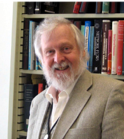
Harold Kirkham
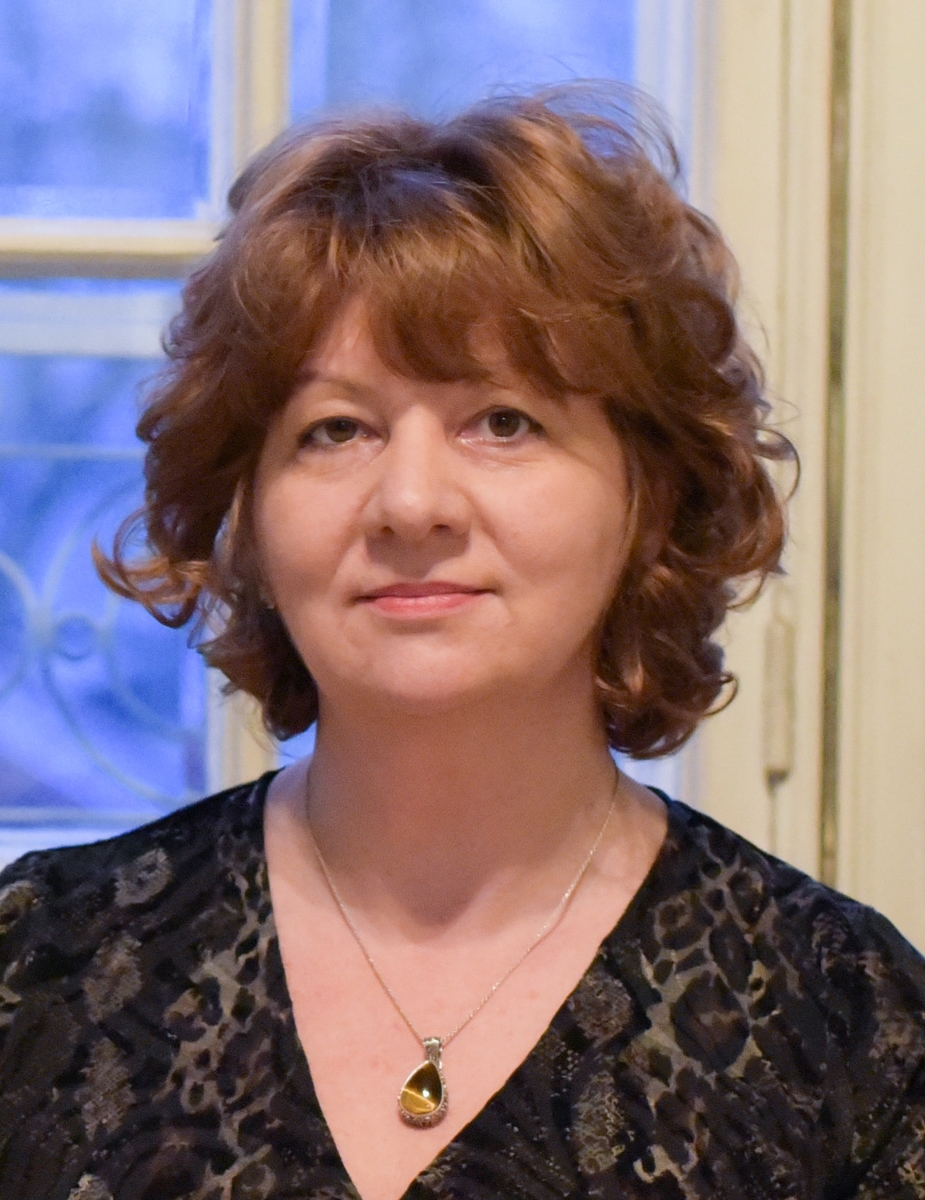
Mihaela M. Albu
An Explicative Dictionary of Measurements in Modern Power Systems
Harold Kirkham, Artis Riepnieks, Rod White and Mihaela M. Albu
Measurement affects many aspects of electric power systems, including planning, operation, and markets. As the grid becomes “smarter” it becomes more automated. Measurement is removed further from human involvement. Smart grid operation, including control of the energy flow in active distribution grids, adds more challenges to the measurement problem. However, not all aspects of measurement are well-understood in the power community.
Presently there is a gap between the measurement models assumed by most of the measurement devices deployed in power systems and the measured quantities themselves. There is a further gap between what is known from the information provided by the measurements, and what is often thought to be known. There is, in other words, a metrology gap and an epistemology gap. We intend to raise awareness of the two gaps (the metrology and the epistemology gap) for designing smart, autonomous grids, making models and running numerical simulations, and ultimately safely operate such emerging grids.
The tutorial will address:
· The measurement paradigm in power systems; most of the quantities of interest are indirect measurements deriving from voltage and current signals furnished by instrumentation transformers. Some of the constructs used have been problematical for over a century.
· Specific measurement requirements in smart grids.
· Measurement codes and standards worldwide. In particular, the standard that defines four significant power quantities (power, reactive power, apparent power and power factor) is undergoing significant revision.
This tutorial will challenge and explain in-use definitions for relevant quantities and indicators in modern power systems, in alphabetical order.
Harold Kirkham (F’04) obtained his BSc and MSc in the UK, and his PhD at Drexel University in Philadelphia. His interests are broad and have always included both power systems and measurements. He has worked at American Electric Power Service Corporation in New York and in Indiana, and in Indiana was (briefly) an Adjunct Professor of Electrical Engineering at the University of Notre Dame. Most of his career has been at NASA’s Jet Propulsion Laboratory. Since 2009 he has been at the Pacific Northwest National Laboratory, where he works principally on measurements, including the phasor measurement unit. He was a member of the IEEE working group that developed Std C37.118.1-2011, the performance standard for the PMU. He was one of the US representatives on the working group generating the IEC performance standard for PMUs. He is presently chairperson of two IEEE working group revising measurement standards 1459 and 120. He is a member of the Instrumentation and Measurement Society, and several other Societies. He has written papers on power and measurement and contributed book chapters on these topics. He has also written a book on graphics. He is an IEEE Distinguished Lecturer in the Power and Energy Society.
Artis Riepnieks (SM 15, M’19) received his BSc’s (in telecommunications and in power engineering), MSc and PhD (2018) from Riga Technical University, Riga, Latvia. He worked as smart grid technologies engineer (2011) at Latvian largest distribution network operator AS “Sadales tikls” and was head of customer service systems unit (2017) at the same company. The work involved billing and metering data collection & management systems. He had a major role in the smart metering rollout program in Latvia (still ongoing) responsible for compliance testing. In 2015 he did a professional internship at Pacific Northwest National Laboratory doing research on phasor-like measurements. Since 2019 has joined the lab as electrical engineer. He is largely involved in measurements work on PMUs and IEEE working group revising std. 1459 working with Dr. Harold Kirkham.
Dr Rod White is a distinguished scientist working in the Temperature and Light Section of Measurement Standards Laboratory of New Zealand (MSL). For more than 30 years, he has conducted MSL’s annual training courses on Measurement, Uncertainty, Calibration, and Temperature Measurement on which this tutorial is based. He is the co-author of a well-known text Traceable Temperatures, and author of more than 100 research papers. For more than a decade he was the chairman of the Uncertainty Working Group of the BIPMs Consultative Committee on Thermometry, and he continues to be an active member of several of the working CCT groups including chair of the Task Group on Guides in Thermometry. Rod has worked at the NIST (USA) and at NIM (China) as a guest researcher on several occasions assisting with the now successful NIST/NIM collaboration to measure the Boltzmann constant by Johnson noise thermometry. He won the NZ Royal Society Science and Technology medal in 1997 for contributions to Temperature Metrology, and the Cooper Medal in 1998 for the invention of the resistance bridge calibrator. In 2010, he was awarded a D.Sc for his contributions to temperature metrology.
Mihaela M. Albu (M’96, SM’07) is from Craiova, Romania. She graduated from “Politehnica” University of Bucharest (UPB) in 1987 and holds the Ph.D. degree (1998) from the same university. Since 2002 she is a Professor (Habil. 2015) of Electrical Engineering at UPB. She is the founder of MicroDERLab and coordinates several research teams working on projects funded by national and international agencies. She led more than 15 teams in international projects. Since 2017 dr. Albu is member of the international steering committee for the microgrids symposium series. Her professional service is highlighted by active membership in IEEE – IMS (currently IEEE Romania Chapter Chair), CIGRE, VDE. She is actively working for standardization – as member of the IEEE-SA, IEC and ASRO: IEC, TC77/SC77A/WG9 Power Quality measurement methods; TC 8/SC 8B/JWG 1 - General Planning, Design, Operation and Control of Microgrids; TC 38/WG 55 - Uncertainty evaluation in the calibration of Instrument Transformers; SyC LVDC/OF Open Forum 1 and WG 1 - LVDC Standards for Electricity Access; IEC TC8/JWG12: System aspects of electrical energy supply-Requirements for frequency measurement used to control DER and loads. Since 2016 she is nominated Distinguished Lecturer of the IEEE Instrumentation and Measurement Society.
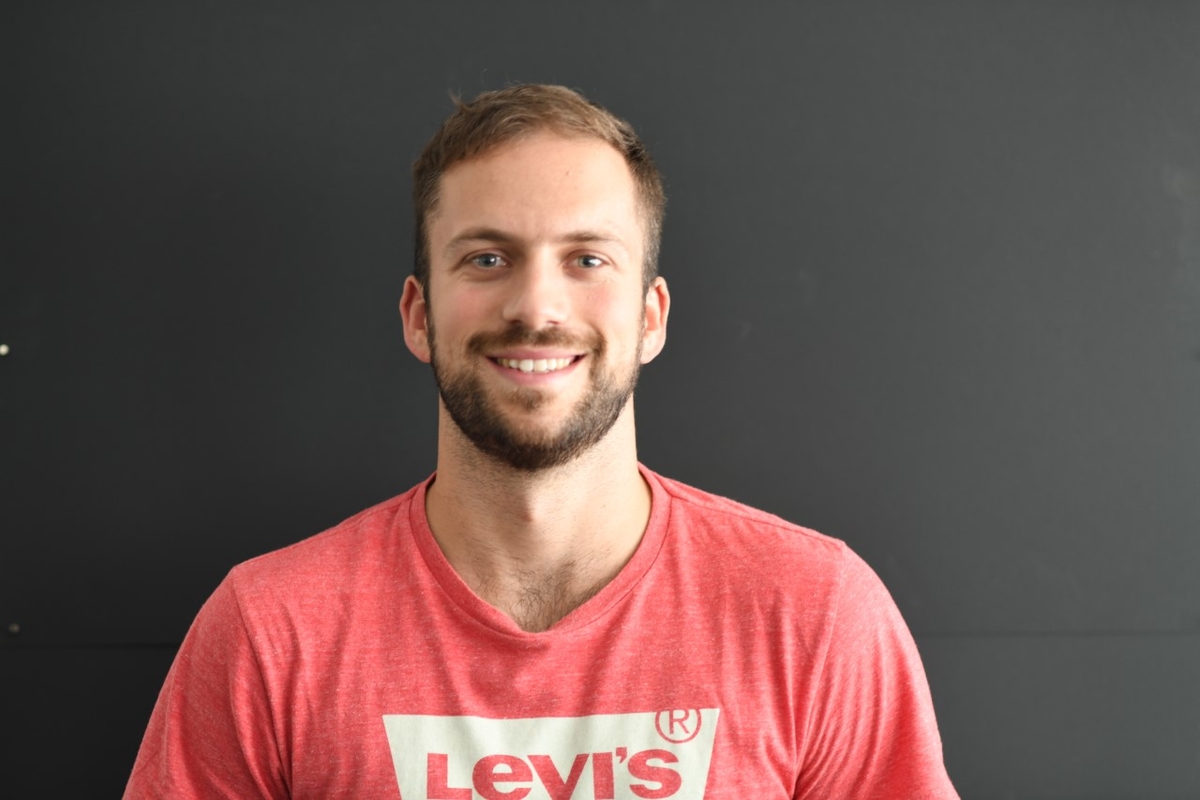
Josip Marijan
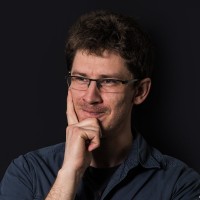
Gabrijel Smoljkic
ROS on the Edge
Josip Marijan and Gabrijel Smoljkic
Edge is a term coined with the recent expansion of IoT devices, sensors and platforms. Edge computing is computing that’s done at or near the source of the data, instead of relying on the cloud application to do all the work. Sending all the generated data to a centralized center causes bandwidth and latency problems. Edge computing gives us an alternative to process and analyze data closer to the point where it is created. The data processing and storing becomes more comprehensive, response time is faster which leads to improved customer experience.
ROS is a component-based framework which makes development, deployment and modification of the software application particularly easy. It implements a microservice architecture and publisher – subscriber paradigm through ROS topics. ROS is intended as a flexible framework which has set of tools, libraries and conventions to simplify writing robot software. ROS application is written as a set of distributed nodes (ROS processes).
But in the end, a robot is nothing but a complex set of actuators, sensors and data processing algorithms. In this sense, ROS has always been on the Edge. ROS on the Edge (RoTE) is intended to be a platform which unifies ROS tools used for data processing and streaming, as well as the configuration of the underlying ROS nodes.
In this tutorial, the aim is to introduce the RoTE project to the broader audience for the first time. Here we will demonstrate use-cases of RoTE and how the system can be configured for real time data measurement and acquisition. Topics which are going to be covered with this tutorial are:
- Configuration of a device running RoTE
- Getting familiar wih the RoTE front-end
- Deploying the RoTE application on premise
- RoTE under the hood: architectural overview of a RoTE system
Josip Marijan received the Bachelor's degree in 2015 and the MS degree in 2017 in Computer Science on Faculty of Electrical Engineering, Mechanical Engineering and Naval Architecture in Split. From 2017 until the present, he has been employed in Greyp as Embedded Softvare Engineer. He has worked as engineer on Greyp-G6 bike and B2B projects in area of embedded development. His interests in technology include everything related to the IoT. From data processing on the edge, caching data on the end devices to storing and tracking those data in the cloud.
Gabrijel Smoljkić received the M.S. degree in Automation engineering at the University of Zagreb, Faculty of Electrical Engineering in 2010. He received his PhD degree in Robotics in 2016 at KU Leuven University, Belgium. He worked in various companies as a robotics and automation engineer, mostly as a software developer. Currently he holds a position in Greyp Bikes as a Head of Embedded Software. His professional interests include development of modular software for embedded devices targeting data processing, data acquisition and data routing.
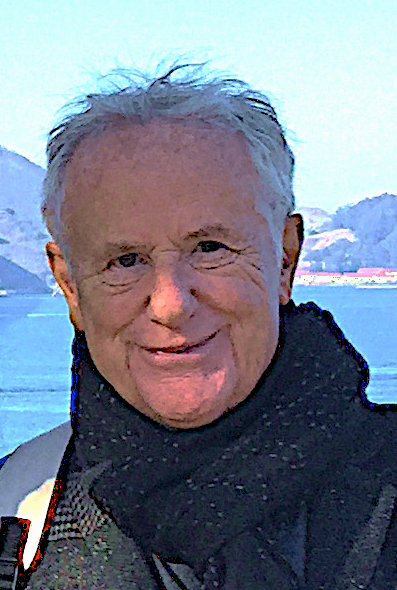
Jean-Charles Bolomey
Microwave-Based Imaging Systems for Medical Applications, from Proofs of Concept to Clinical Practice
Emeritus Professor, University Paris-Saclay, France
The tutorial aims to address specific issues related to microwave-based imaging systems and their use for medical applications, a topic at the crossroad of microwave technology and medicine practice. Beyond the standard engineer viewpoints aiming to consider an imaging system, from microwave frontend sensors to data processing schemes, as a black box instrument, some emphasis is given to end-user’s, i.e. physicians, requirements and real needs in the strong competitive medical imaging landscape widely occupied by well recognized and routinely practiced imaging modalities, mostly based on X-rays, ultrasounds, magnetic resonance (MRI) and nuclear (PET) technologies. The tutorial consists of three main Parts.
The first Part briefly retraces the genesis of microwave-based imaging and its evolution since early dosimetry assessments until medical diagnosis applications exploiting the sensitivity of living tissues dielectric properties with respect to biophysical parameters of clinical relevance, such as water content, blood flow rate or temperature, etc. Such sensitivity may hence enable detecting, localizing and differentiating pathological from healthy tissues. The principles of the two major approaches to microwave diagnosis imaging are introduced. The first one aims to quantitatively retrieve the tissue dielectric permittivity thanks to solving a non-linear inverse scattering problem. The second one consists in qualitatively visualizing ‘hot spots’ resulting from local dielectric contrasts by using the radar equation. Both approaches will be compared according to their relative advantages and limitations in terms of microwave system complexity and computer power requirements. In addition, the growing use of machine learning is also briefly considered, either for image augmented post processing or direct diagnostic classification.
Part II, dealing with the impact of hereabove described microwave systems, is beginning with a short overview of the medical imaging market enabling to identify the possible access points for microwaves, thanks to their supposed specific advantages. Two examples of worldwide major health care relevance applications are more particularly considered, breast cancer and brain stroke diagnosis. Early results stemming from clinical trials enable to estimate the performances of microwave-based imaging systems in terms of sensitivity/specificity capability. The timeliness of the tutorial is that the key moment is arrived where these early, even preliminary, clinical results allow to better identify the limitations of microwave imaging systems and, hence, how their clinical acceptance could be improved.
Part III is dedicated to Specific Absorption Rate (SAR) measurements, which, aiming to quantify human exposure to electromagnetic fields, constitutes another aspect of interactions between microwaves and living tissues. It is shown how the experience gained in the development of microwave imaging systems is finding their natural application to dosimetry measurement techniques, especially to speed up standard SAR measurement procedures, a crucial issue to assess the compliance of a dramatically growing number of 5G wireless devices.
To conclude, the tutorial provides a summarized budget of the research effort dedicated to microwave-based imaging during the past four decades. The future of this ‘last comer’ imaging modality is, to the extent that it can reasonably be done, envisioned in light of microwave and computer technology expected evolution, without neglecting the already started invasion of Artificial Intelligence in existing imaging modalities and, more generally, in the medical practice.
Jean-Charles Bolomey is currently Emeritus Professor at Paris-Saclay University (PSU), France. He graduated the Radio Engineer degree from Supelec (1963) and a Ph.D. from PSU (1971). His research has been conducted in Laboratoire des Signaux et Systemes, a joint unit of Supelec, CNRS and PSU. Since 1981, his research has been dedicated to Near-Field techniques in a broad sense, including antenna measurements, EMC testing as well as Industrial-Scientific-Medical (ISM) applications, with emphasis on measurement techniques involving innovative probe array technology. He has more particularly valorized the Modulated Scattering Technique (MST), demonstrating its unrivaled potential for rapid, accurate and cost effective Near-Field scanning. He co-authored with Professor F.Gardiol a reference book on MST principles and applications. Filing several patents covering MST-based arrangements for microwave sensing and imaging systems, he founded the Microwave Vision Company SATIMO (1986) which has been expanding as the Microwave Vision Group Company (MVG). He also actively contributed to many EU Cooperative Programs (from medical microwave hyperthermia to industrial process tomography) and to several prototype evaluation/transfer procedures, while extending his research to rapid SAR measurements for RF dosimetry, and to load-modulated scattering antennas for novel RFID sensing modalities in cooperation with UPC Barcelona. He has also continuously contributed to several Scientific Advisory Boards of European Institutions and startup companies, and was sollicited for reviewing "spin-off" projects by European and North American funding foundations.
Professor Bolomey is Fellow Member of IEEE, SEE and AMTA Societies. He was IEEE AP-S Distinguished Lecturer (2010-2013) and continuously provided invited papers at PIERS (2014, 2019), EuCAP (2010, 2014, 2019), AMTA (2019) Conferences as well as tutorials for ESoA courses (2018, 2019, 202). He received recently, the 2015 IEEE IM-S Joseph F. Keithley and 2017 EurAAP Antenna Awards.

Markus Neumayer
Stochastic Processes in Measurement Signal Analysis
Markus Neumayer
Institute of Electrical Measurement and Sensing Systems
Signal analysis and signal processing are core elements of measurement science and technology. Signals carry the information about the quantity of interest. Sufficient understanding about the nature of the signals is required, to correctly extract the desired information. Furthermore, the presence of measurement noise adds a random component to the signals. Based on a correct understanding about the nature of a signal, suitable non-parametric or parametric signal processing methods have to be selected. This tutorial discusses the treatment of signals within the framework of stochastic processes. The framework of stochastic processes maintains a probabilistic view on signals. Based on the description of random variables, the expectation operator is used to characterize signals by different metrics like moments or correlation functions. These quantities can be related to classical signal parameters known from electrical engineering like the signal power or the DC-component, allowing a generalized view on signals. The temporal properties of these moments are used to form a classification between stationary and non-stationary stochastic processes. The distinction between these two classes is crucial for spectral analysis using the DFT based measurement system. Based on the classification by means of the stationarity, the important class of wide sense stationary (WSS) stochastic processes can be defined. For WSS stochastic processes a unified framework relating several signal analysis methods can be derived. An important quantity is the power spectral density (PSD), which is based on the Wiener-Khinchin theorem. The PSD allows a spectral analysis of random signals, e.g. noise signals. Furthermore, the transformation of WSS stochastic processes by linear time invariant (LTI) systems is addressed and the influence on the signal analysis methods is summarized. The tutorial covers the motivation and the aspects of considering signals within the framework of stochastic processes. The description of signals within this framework and the correct application of signal analysis methods is addressed. Furthermore, the framework allows the derivation of optimal signal estimation and signal detection techniques. Examples for the application of the framework for measurement applications will round up the tutorial.
Markus Neumayer was born in Austria in 1983. He studied electrical engineering at Graz University of Technology (TU Graz) and received the Dipl. Ing. degree and the Dr. techn. in 2008 and 2011, respectively. He is currently a Senior Scientist with the Institute of Electrical Measurement and Sensing Systems at Graz University of Technology. Within his dissertation Dr. Neumayer developed statistical estimation algorithms for electrical tomography systems. His PhD thesis was awarded by the Austrian government in 2012 (Award of Excellence). In 2012 he also received a research award for his contributions in the field of numerical simulations. In his research work he is interested in the development of measurement systems for applications with harsh environmental conditions. The main focus of his work is the modelling and simulation of measurement and sensor systems as well as their analysis and optimization with methods of statistical signal processing.
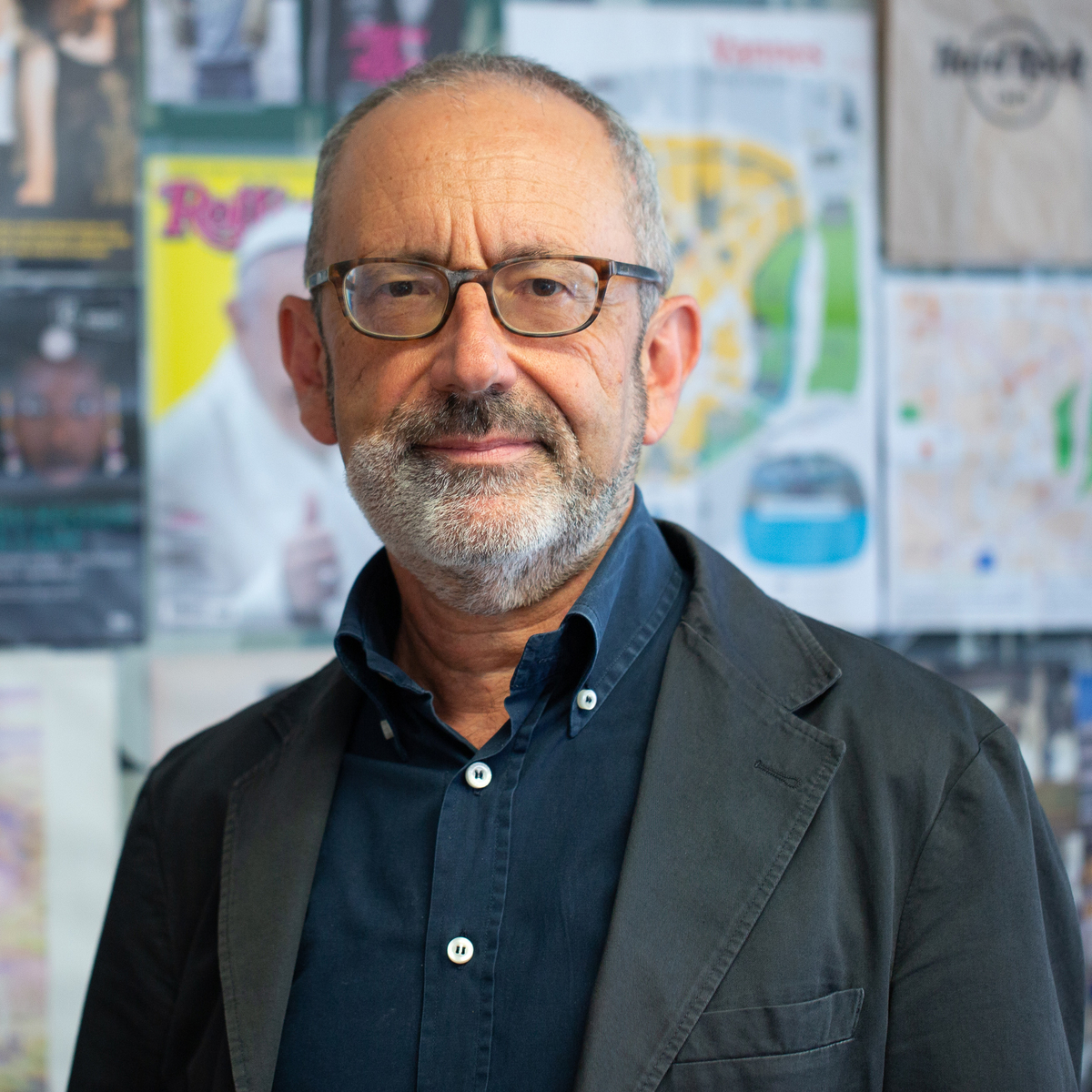
Giovanni Battista Rossi

Francesco Crenna
Uncertainty Evaluation Based on Measurement Modeling
Giovanni Battista Rossi and Francesco Crenna
Uncertainty evaluation is a major task for quality assured measurement. A systematic approach to such an evaluation, based on measurement modeling, is presented. Three main architectures for practical measurements – the device, the measuring chain and the multichannel measurement system – are considered and a general model expressed by block diagrams is developed, where uncertainty sources are represented by probabilistic variables. The solution of the uncertainty evaluation problem naturally outcomes by solving such a model in respect of the variable of interest, without the need of referring to specific statistic-probabilistic school of thought, such as the Bayesian or the frequentistic one. The standpoints of the designer/manufacturer and of the user of the measurement system are outlined and discussed.
The tutorial aims at providing practical instruction to operators involved in measurement and instrumentation on how to systematically proceed in the evaluation of uncertainty, with an approach based on a block-diagram representation of measuring chains and systems, that should be familiar to them, since it is the one usually adopted in textbooks and handbooks, for the design, calibration and use of measurement instrumentation.
The application of the method is demonstrated by fully working out an uncertainty evaluation for an experimental test case, purposely designed and performed to outline common important issues, such as the use of repeated observations, the compensation of systematic effects and the inclusion of calibration data. The evaluation of expanded uncertainty by convolution of probability distributions is also addressed and the use of special software for its implementation is also demonstrated.
Giovanni Battista Rossi received the Laurea degree (with first-class honors) in mechanical engineering from Università degli Studi di Genova, Genoa, in 1981.
A certified Engineer, he was a Designer with Fincantieri, Riva Trigoso, Italy, and then an Assistant Professor from 1983 to 1992 and an Associate Professor from 1992 to 2002. He is currently a Professor of measurement, instrumentation, and biomechanics with the University of Genova. As a Teacher, he has lectured for a national televised university teaching program (Nettuno). He is currently Coordinator of the M.Sc. course “Mechanical Engineering – Design and Construction” and is a member of the board of lecturers of the Ph.D. School of Mechanical Engineering. He is Co-Editor of the book Measurement with Persons (Taylor and Francis, 2012) and authored the book Measurement and Probability (Springer, 2014). He is Co-Editor of the series Measurement Science and Technology of Springer. He is an EU-Recognized expert in measurement and testing and has recently chaired an expert group for the evaluation of the European Metrology Research Program and the European Metrology Program for Innovation and Research from 2016 to 2017. His current research interests include measurement theory, probabilistic models and methods, perceptual and dynamic measurement, and experimental biomechanics.
Dr. Rossi has been chairman of Technical Committee 7 (Measurement Science) of the International Measurement Confederation (IMEKO) from 2012 to 2018 and was the Italian Vice-Representative of the General Council of IMEKO from 2011 to 2015. He co-chaired the IMEKO-IEEE-Society of Instrument and Control Engineers Second International Symposium on Measurement, Analysis, and Modeling of Human Functions in 2004, an international intensive course on perceptual measurement in 2008, as part of the EU Measuring the Impossible Network Project, and the 2013 Joint IMEKO TC1-TC7-TC13 Symposium. He recently chaired the Advisory Board of the 2017 Joint IMEKO TC1-TC7-TC13-TC18 Symposium, held in St. Petersburg in 2019, and cochaired the Technical Committee of the IMEKO TC15 Congress MetroSea 2019, held in Genoa, Italy, in 2019.
Francesco Crenna received the Laurea degree in Physics from Università degli Studi di Genova, in 1989.
Formerly Researcher at the National Research Council and in industrial companies – Ansaldo Ricerche, Sixtel.Olivetti – he is currently Associate Professor of Measurement-Instrumentation and of Sports Biomechanics with the University of Genova, Genova, Italy. He has been Quality Manager in the Measurement Laboratory, which was certified to ISO 9001:2008 for “research, experimentation and education in the field of measurement” from 2003 to 2017. Currently he is responsible for the Educational and Research Activities in the Measurement Lab. He has written about 80 scientific papers and he serves as a reviewer for some important journals in the measurement field.
Prof Crenna is a member of IMEKO Technical Committees TC7 –Measurement Science and TC18 -Measurement of Human Functions. He is also member of International Society of Biomechanics in Sports and International Society of Biomechanics. He contributed to the organization of several scientific events and he co-chaired the 2013 Joint IMEKO TC1-TC7- TC13 Symposium.
His main research interests are applications of probability methods in measurements, vibro-acoustic measurements and their application to human perception, experimental Biomechanics. His activities are exploited in collaborations with industrial and public partners such as the Rehabilitation Unit at Colletta Hospital (Arenzano Italy).

Stefan Marinca
A Journey in the Search of the Ideal Monolithic Voltage References
Stefan Marinca
The tutorial aims to address different issues related to design and characterization of IC silicon-based voltage references: short history, first and second order temperature errors, techniques to reduce the voltage noise, ultra-low power bias current generators and voltage references, resistorless voltage references.
Tutorial Summary
- Basics on bipolar transistor temperature behavior. Bipolar transistor model parameters.
- Bandgap type voltage reference. Short history: Hilbiber cell; Widlar cell, Kuijic cell; Brokaw cell; Variants of the Brokaw cell.
- Architectures for Proportional To Absolute Temperature (PTAT) voltages.
- Offset sensitivity of voltage references. Low offset voltage references.
- Second order errors correction methods.
- Very low temperature coefficient (TC) of the bandgap type voltage references.
- Process independent voltage references. ADR35xx micropower standalone voltage reference.
- Bias current generators, voltage references and temperature sensors without resistors.
- Ultra-low noise voltage references and temperature sensors.
- High precision temperature sensors based on stacked base-emitter voltage difference. ADR45xx ultra-low noise, high precision, standalone voltage reference family.
- High precision temperature sensor with Early voltage compensation
- Precision voltage reference based on Buried Zener Diodes.
Stefan Marinca is a consultant for Infineon's Romanian Design Centre, via Von Consulting.
He is also a member of the examination committee at Bucharest's Faculty of Electronics. He graduated from the Electrotechnical Faculty of Timisoara in 1972 and was also awarded a PhD there in 1995.
Between 2000 and 2016 Stefan held various positions, including senior staff design engineer, at two Analog Devices locations: Limerick, Ireland and Silicon Valley, California, where he published thirty-three US patents. While at Analog Devices he designed more than fifty analog ICs in the field of silicon-based voltage references and temperature sensors setting new industry standards. For his patenting activity he was awarded the in-house title of Inventor of the Year (Ireland, 2006) and the winner of the Analog Devices Worldwide Invention Contest (USA, 2014). He was guest speaker at various Analog Devices sites: Limerick (Ireland), Valencia (Spain), Boston, Portland, Silicon Valley and San Diego (USA), Beijing and Shanghai (China). Stefan retired from Analog Devices in 2016.
Prior to his move to Ireland, between 1977-2000 Stefan worked for the North University of Baia Mare and also headed the Electronics department. During this period, he published eighteen Romanian-registered patents in the field of electrical and electronic measurements. Stefan started his career as an engineer at the Electricity Distribution Company of Maramures county between 1972 and 1977.
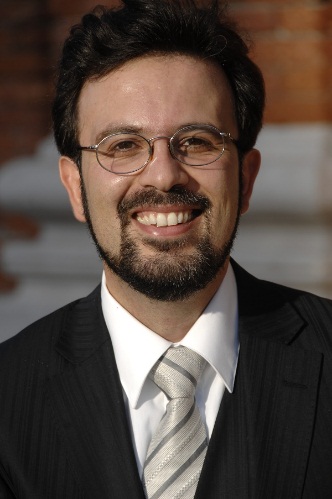
Emiliano Sisinni
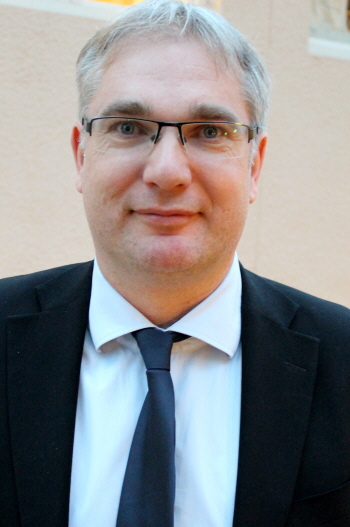
Mikael Gidlund
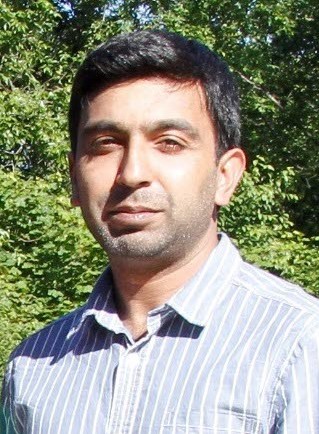
Aamir Mahmood
Wireless connectivity for the Industrial IoT
Emiliano Sisinni
Professor, Mid Sweden University; Department of Information and Communication Systems
Mikael Gidlund
Professor, University of Brescia; Department of Information Engineering
Aamir Mahmood
Assistant Professor, Mid Sweden University; Department of Information and Communication Systems
The tutorial will explain the field of application and the related research activities associated to wireless communication solutions for Industrial Internet of Things (IIoT) applications. The IIoT paradigm switch is mandatory for Industry 4.0 goal of improving overall industrial efficiency. The implementation of so called digital twin is only possible with the support of IIoT-like communication solutions. Wireless will play a major role, due to the intrinsic flexibility it offers.
The industrial wireless technology is not new and it has grown in recent times. In particular, two standard solutions have been proposed in the past purposely designed for process automation, i.e. WirelessHART and ISA100.11a. However, they are intended for process monitoring and control and do not fit very well with IIoT approach and the final goal of a flat automation pyramid.
By the way, in the consumer side some solutions emerged as leading technologies for wireless IoT; one for all, the Low Power Wide Area Networks – LPWANs. Currently, LoRaWAN is the most famous and diffused example of LPWAN.
One of the main intent of this tutorial is to highlight pros and cons of these solutions, especially highlighting possible limitations when used in the industrial domain, different from the original intended one (i.e. smart city scenarios)
The proposed tutorial is arranged in order to bring value to researchers, instrumentation engineers, automation professionals and influencers in the wireless automation scenario.
The tutorial will focus on these main topics:
- Basic concepts of wireless networks for industrial applications
- IoT and Industrial IoT
- Legacy wireless solutions for industrial applications: WirelessHART, ISA100.11a…
- The new LPWAN paradigm
- An example: the LoRaWAN solution and its possible applications in the industrial domain
- Modeling and performance evaluation: issues and challenges
Emiliano Sisinni graduated (M.Sc.) in electronic engineering in 2000 at the University of Brescia. In 2004, he got the Ph.D. in “Electronic Instrumentation” at the same University. Currently, he is a full professor in electronics with the Department of Information Engineering at the University of Brescia. He is a visiting professor at the “Mid Sweden University” since the academic year 2016/2017.
His main research topic is the development and the performance evaluation of digital networks for industrial communications. Since 2008 he is within the committee SC65C - WG16 and WG17 and the TC65C - WG 17 of the IEC (International Electrotechnical Commission). He is a member of the TCFA Subcommittee on “Green Communication for Automation of the company” supported by the IEEE Industrial Electronics Society, since 2014. He is a member of the “IEEE Instrumentation and Measurement Society” TC37 on “Measurement and Networking”, since 2016. He has served as guest editor for IEEE Trans. on Industrial Informatics in the special session “From Industrial Wireless Sensor Networks to Industrial Internet of Things”. The research activity on a LoRaWAN range extender for industrial applications has been awarded with the “Best WiP Paper Award” during the WFCS2018 (IEEE International Workshop on Factory Communications System).
Mikael Gidlund received the M.Sc. and Ph.D. degrees in electrical engineering from Mid Sweden University, Sweden, in 2000 and 2005, respectively. He is currently a Full Professor of Computer Engineering with Mid Sweden University, and since 2014, he is also working as a Scientific Advisor with ABB Corporate Research. In 2005, he was a Visiting Researcher with the Department of Informatics, University of Bergen, Norway. From 2006 to 2007, he was a Research Engineer and Project Manager, responsible for wireless broadband communication at Acreo AB, Sweden. From 2007 to 2008, he was a Senior Specialist and Project Manager with responsibility for next-generation IP-based radio solutions at Nera Networks AS, Bergen, Norway. From 2008 to 2013, he was a Senior Principal Scientist and Global Research Area Coordinator of Wireless Technologies with ABB Corporate Research with main responsibility to drive technology and strategy plans, standardization and innovation in the wireless automation area. He holds more than 20 patents (granted and pending applications) in the area of wireless communications, and has authored or co-authored over 100 scientific publications in refereed fora. His research interest are wireless communication and networks, wireless sensor networks, access protocols, and security. He won the Best Paper Award at the IEEE International Conference on Industrial IT (ICIT’14) in 2014. He has served as guest editor for IEEE Trans. on Industrial Informatics two times and is currently vice-chair for IEEE IES Technical Committee on Cloud and Wireless Systems for Industrial Applications.
Aamir Mahmood received the B.E. degree in electrical engineering from National University of Sciences and Technology (NUST), Pakistan, in 2002, the M.Sc. and D.Sc. degrees in communications engineering from Aalto University School of Electrical Engineering, Finland, in 2008 and 2014, respectively. He worked as a research intern at Nokia Researcher Center, Finland, in 2014, visiting researcher at Aalto University in 2015-2016, and postdoctoral researcher at, Mid Sweden University (MIUN), Sweden, in 2016-2018. Since 2019, he is an assistant professor at the department of information systems and technology at MIUN. His research interests include low-power local/wide-area networks, energy-delay aware radio resource allocation and RF interference/coexistence management.
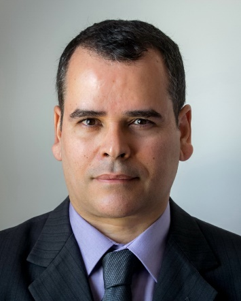
Sebastian Yuri Catunda
Thermoresistive Sensors, Applications and Electrical Equivalence Principle
Sebastian Yuri Catunda
Thermoresistive sensors find several applications beyond temperature measurement. These include applications for measurement of fluid speed, incident radiation (solar, infrared and microwave radiation), AC power, gas detection, acceleration and gyroscopes. Sensors architectures, i.e. the analog front-end that provides excitation for generating the measurement signal, play an important role in the measurement system performance, like response time, linearity, sensitivity, power, among others. In architectures employing the electrical equivalence principle, the sensor operates near a constant temperature, in a feedback control configuration, where variations of the measurand are substituted by equivalent variations of the electrical power delivered to the sensor. Among several sensor architectures, those employing the electrical equivalence principle provide best response time and can mitigate a sensor nonlinear temperature-resistance relationship. Nevertheless, these architectures still present some shortcomings, which motivate research for improvements and for new architectures and techniques, evidencing the timeliness of the topic.
Sebastian Yuri Cavalcanti Catunda graduated in electrical engineering from the Federal University of Paraíba (1993), achieved M.Sc. degree from the Federal University of Paraíba (1996) and the Ph.D. degree in electrical engineering from the Federal University of Campina Grande (2000) and École Nationale Supérieure des Télécommunications - ENST, Paris. He was a professor of the Department of Electrical Engineering of the Federal University of Maranhão (UFMA) from 1998 to 2011. In 2011 he joined the Federal University of Rio Grande do Norte (UFRN), at Natal, where he is currently a full professor of the Department of Computer Engineering and Automation. He is Senior Member of IEEE since 2013. He founded in 2013 and presided until 2017, the Joint Chapter IEEE IMS / CASS of Bahia Section. He founded in 2016 the International Symposium on Instrumentation Systems, Circuits, and Transducers (INSCIT), which is supported by the Brazilian Society of Microelectronics and technically co-sponsored by the IEEE Instrumentation and Measurement Society (IMS). His research interests focus on instrumentation and microelectronics including the topics of sensors, analog and mixed circuits, embedded systems, and data acquisition systems, in which he has published more than 130 papers.
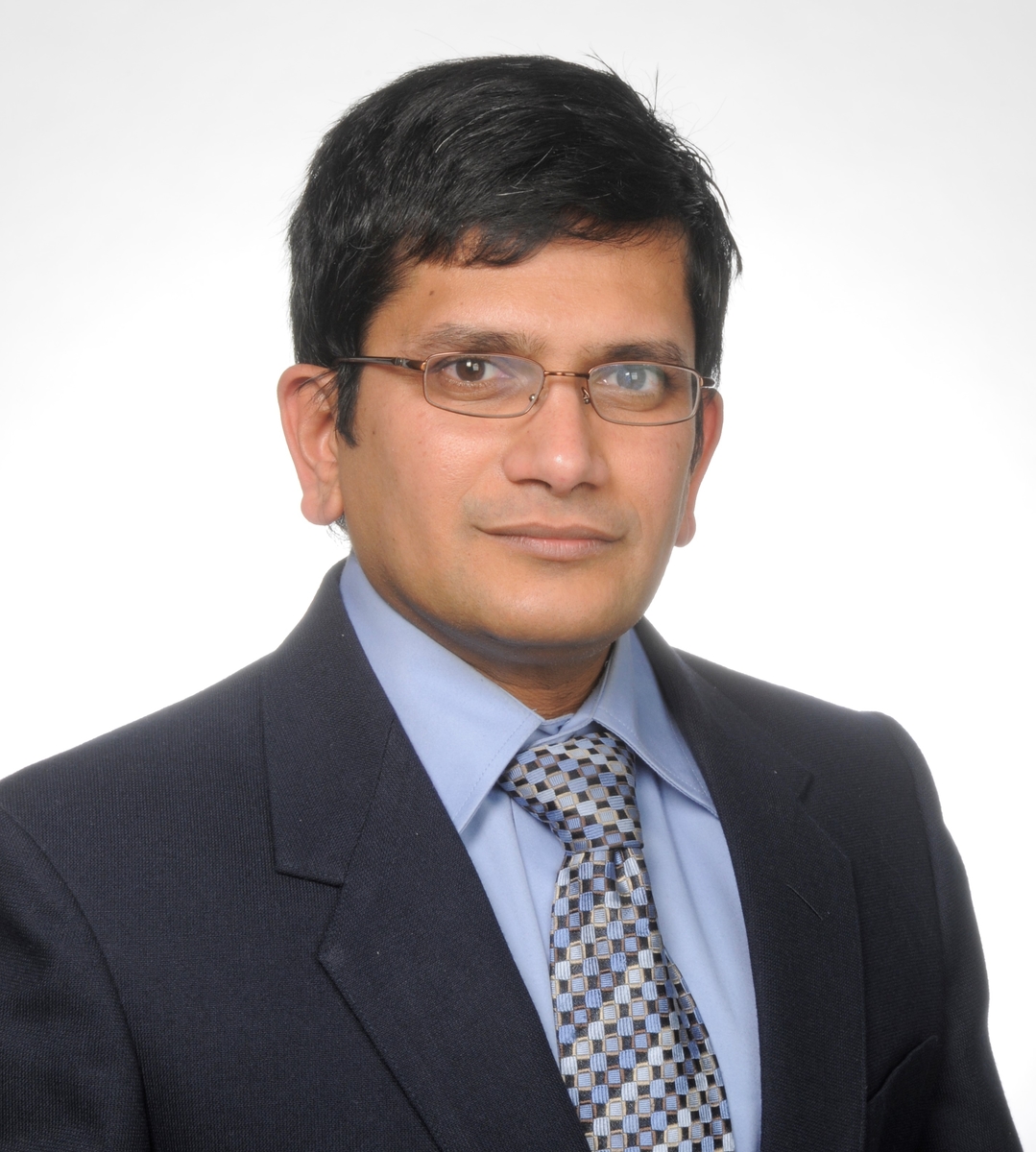
Sreeraman Rajan
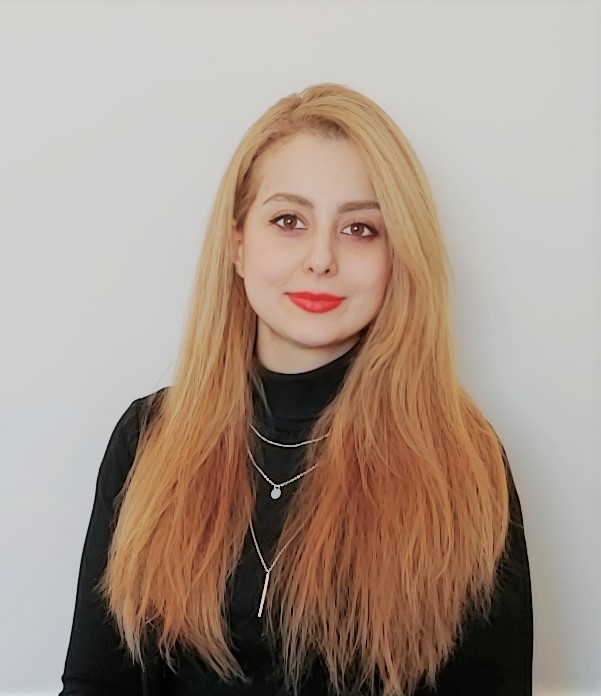
Fereshteh Fakhar Firouzeh
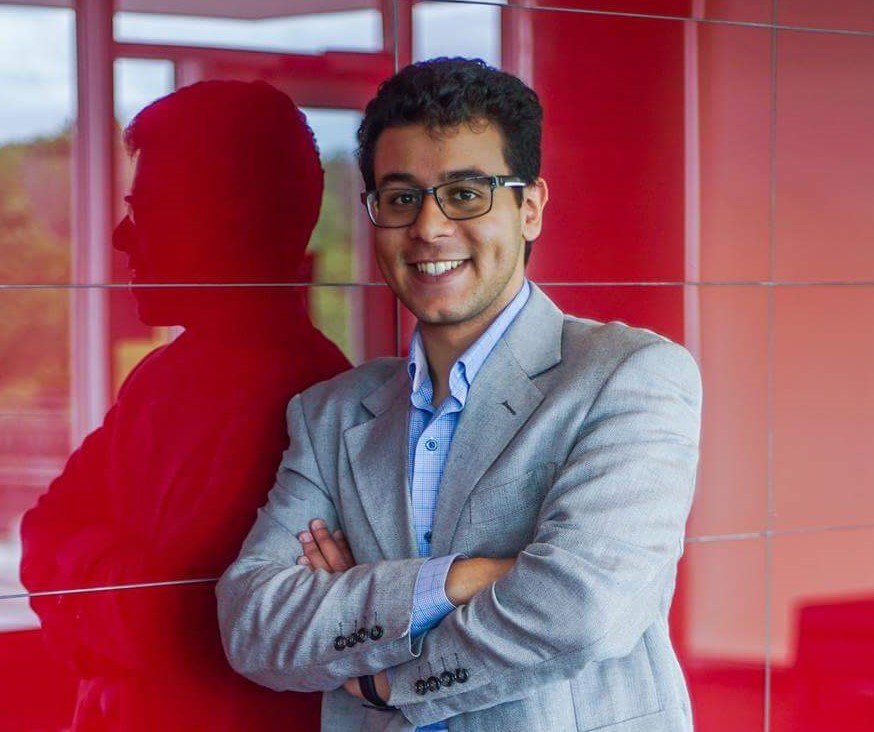
Mohamed Abdelazez
From Compression to Recovery: An Overview of Compressive Sensing
Sreeraman Rajan, Fereshteh Fakhar Firouzeh, and Mohamed Abdelazez
The tutorial will explain the field of application and the related research activities associated to wireless communication solutions for Industrial Internet of Things (IIoT) applications. The IIoT paradigm switch is mandatory for Industry 4.0 goal of improving overall industrial efficiency. The implementation of so called digital twin is only possible with the support of IIoT-like communication solutions. Wireless will play a major role, due to the intrinsic flexibility it offers. Internet of Things (IoT) are ubiquitous and are expected to reach 18 billion device by the year 2022. An IoT device can perform a multitude of activities including providing assistance to the user through voice interactions. Over 7 billion voice assistants are anticipated to be available by the year 2022. Considering a typical sampling frequency of 48 kHz and a sample voice commands such as ’Hey, how is the weather today?’ spoken over two seconds, a voice assistant will generate 96KB. If the 8 billion devices available by the year 2023 are used once per day, a total of 768TB will be generated. Most of the voice assistants live on devices with low computational power and/or battery-powered; thereby, requiring the transmission of the data to a cloud for processing. The transmission of 768TB of data over cellular and wireless networks may lead to congestion and a decrease in the quality of the connection. Additionally, 60% of the energy in a battery-powered wireless device is used to transmit the data. Compression of the voice before transmission is, therefore, warranted to prevent network congestion and to preserve battery power. Compressive Sensing (CS) is a candidate technique that can prolong battery life by acquiring signals below the Nyquist rate and help reduce transmission bandwidth.
This tutorial will present CS as a two phase process: compression phase and the sparse recovery phase. Compression phase is presented as a “weak encryption” process. In the sparse recovery phase of CS, the sparse solution can be estimated by considering a variety of optimization techniques. In general, sparse estimation algorithms can be categorized into three classes: (1) convex relaxation, (2) non-convex methods, and (3) greedy algorithms.
In this tutorial, the aforementioned classes will be broadly discussed. Moreover, problems (e.g., small critical sparsity, low compression, and low quality of the recovered signal) of the existing algorithms will be addressed and new algorithms that can provide better recovery with high critical sparsity will be introduced. Techniques for improving the recovery will also be presented. As sparse recovery phase of CS can be computationally expensive and often done in the cloud, a method to handle security of the recovery process will also be discussed. This tutorial will also further explore the possibility of conducting detection and classification in the compressed domain without resorting to recovery. Compressed domain classification using machine learning and model-CS based will be presented.
Dr. Sreeraman Rajan (M'90–SM'06) received the B.E. degree in electronics and communications from Bharathiyar University, Coimbatore, India, in 1987, the M.Sc. degree in electrical engineering from Tulane University, New Orleans, LA, in 1992, and the Ph.D. degree in electrical engineering from the University of New Brunswick, Fredericton, NB, Canada, in 2004.
From 1986 to 1990, he was a Scientific Officer with the Reactor Control Division, Bhabha Atomic Research Center (BARC), Bombay, India, after undergoing an intense training in nuclear science and engineering from its training school. At BARC, he developed systems for control, safety, and regulation of nuclear research and power reactors. During 1997–1998, he carried out research under a grant from Siemens Corporate Research, Princeton, NJ. From 1999 to 2000, he was with JDS Uniphase, Ottawa, ON, Canada, where he worked on optical components and the development of signal processing algorithms for advanced fiber optic modules. From 2000 to 2003, he was with Ceyba Corporation, Ottawa, where he developed channel monitoring, dynamic equalization, and optical power control solutions for advanced ultra-long haul and long haul fiber optic communication systems. In 2004, he was with Biopeak Corporation, where he developed signal processing algorithms for non-invasive medical devices. From December 2004-June 2015, he was a Defense Scientist with the Defence Research and Development Canada, Ottawa, Canada. He joined Carleton University as a Tier 2 Canada Research Chair (Sensors Systems) in its Department of Systems and Computer Engineering in July 2015. He is the Associate Director, Ottawa-Carleton Institute for Biomedical Engineering (OCIBME) since June 2016. He was an Adjunct Professor at the School of Electrical Engineering and Computer Science, University of Ottawa, Ottawa, ON, Canada (July 2010-June 2018) and an Adjunct Professor at the Department of Electrical and Computer Engineering, Royal Military College, Kingston, Ontario, Canada, since July 2015. He is the holder of two patents and two disclosures of invention. He is an author of 160 journal articles and conference papers. His research interests include signal processing, biomedical signal processing, communication, and pattern classification.
He is currently the Chair of the IEEE Ottawa EMBS and AESS Chapters and has served IEEE Canada as its board member (2010-2018). He was awarded the IEEE MGA Achievement Award in 2012 and recognized for his IEEE contributions with Queen Elizabeth II Diamond Jubilee Medal in 2012. IEEE Canada recognized his outstanding service through 2016 W.S. Read Outstanding Service Award. He has been involved in organizing several successful IEEE conferences and has been a reviewer for several IEEE journals and conferences.
Fereshteh Fakhar Firouzeh is a PhD candidate in Electrical and Computer Engineering at Carleton University. She has been working on signal processing and compressive sensing (CS) for over 6 years. Her Master's thesis titled \say{Speech Enhancement Compressive Sensing} was on CS and its application in enhancing and denoising speech signals. During her PhD, she has been developing novel optimization dimensionality reduction techniques based on Maximum Feasible Subsystem (MAX FS). She has applied her proposed methods to a variety of areas such as classification, Non-negative Matrix Factorization (NNMF), electrocardiogram signal processing, and speech processing.
Mohamed Abdelazez is pursuing his PhD in Electrical and Computer Engineering and is a Vanier scholar at Carleton University. His Master’s thesis title was “Electrocardiogram Signal Quality Analysis to Reduce False Alarms in Myocardial Ischemia Monitoring” and was on signal quality and its application in reducing false alarms. Mohamed’s Master’s thesis received a Senate Medal from Carleton University. His current area of research is the deduction of Atrial Fibrillation in compressive sensed ECG. Outside of academia, he is the vice-chair of IEEE EMB Ottawa Chapter.
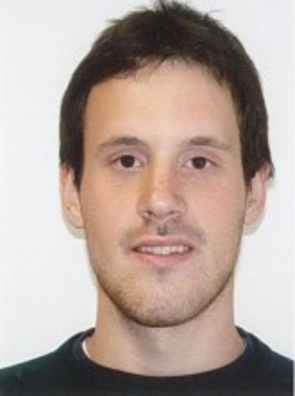
Guglielmo Frigo
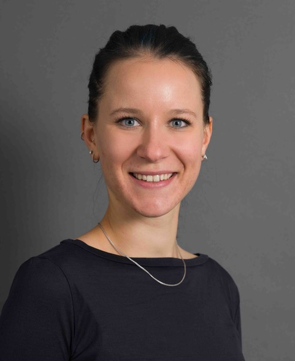
Asja Derviskadic

Mario Paolone
Analysis of Broad-Band Signals in Reduced-Inertia Power Systems Using the Hilbert Transform
Guglielmo Frigo, Asja Derviskadic, and Mario Paolone
Modern and future power systems are at risk of largely reducing their rotating machines inertia. The consequence is that, during electromechanical transients triggered by contingencies, the transmission of electrical power may take place over a continuous and wide spectrum well beyond the sole fundamental component. In this evolving scenario, a rigorous modelling framework tailored for reduced-inertia grids is still missing. Indeed, traditional modelling approaches rely on the classical static or dynamic phasor representation derived from various algorithms all based on the use of the Fourier Transform (FT) applied to the signals of voltage and current waveforms. However, being based on a static signal model and a discrete and finite frequency resolution, the FT-based analysis may fail to accurately identify the signal parameters during non-stationary operating conditions.
The tutorial describes an alternative approach for modelling large power system electromechanical transients that goes beyond the phasor concept. The approach is inspired by the theory on analytic signals and is based on the Hilbert transform (HT). Thanks to its time-dependent formulation, the HT enables us to preserve unaltered the signal dynamics and, at the same time, extract the signal parameters for a concise and exhaustive representation. Then, it is shown how circuit laws can be solved with the HT that is able to reconstruct the electrical power transfer over the whole spectrum. These theoretical findings are supported by experimental evidence that compares FT- and HT-based analysis with respect to real-world power system operating conditions.
Guglielmo Frigo (M’18) was born in Padua, Italy, in 1986. He received the B.Sc. and M.Sc. degrees in biomedical engineering from the University of Padova, Padua, in 2008 and 2011, respectively, and the Ph.D. degree from the School of Information Engineering, University of Padova, in 2015, with a dissertation about compressive sensing (CS) theory applications to instrumentation and measurement scenario. He joined the Electronic Measurement Research Group, Department of Information Engineering, Padova, in 2011, and collaborated in the successful development of CS-based algorithms in the fields of spectral analysis, biomedical engineering, and smart-grid measurement. Since 2018, he has been with the Distributed Electrical Laboratory, Swiss Federal Institute of Technology of Lausanne, Lausanne, Switzerland. He has co-authored several conference and journal papers on these topics. His current research interests include the development of enhanced measurement devices for active distribution networks.
Asja Derviškadić (M’15) was born in Sarajevo, Bosnia and Herzegovina, in 1990. She received the Ph.D. degree in electrical engineering from the Swiss Federal Institute of Technology of Lausanne (EPFL), Lausanne, Switzerland in 2019 and the B.Sc. and M.Sc. degrees (Hons.) in electrical engineering from the University of Rome “La Sapienza,” Rome, Italy, in 2012 and 2015, respectively. She is currently a Postdoctoral fellow at the Distributed Electrical Systems Laboratory of EPFL. Her research interests focus on synchronised sensing technologies for wide-area situational awareness of electrical grids operating in non-stationary conditions, including the development of enhanced Phasor Measurements Units (PMU).
Mario Paolone (M’07–SM’10) received the M.Sc. (Hons.) and Ph.D. degrees in electrical engineering from the University of Bologna, Bologna, Italy, in 1998 and 2002, respectively.
In 2005, he was an Assistant Professor in power systems with the University of Bologna, where he was with the Power Systems Laboratory until 2011. Since 2011, he has been with the Swiss Federal Institute of Technology, Lausanne, Switzerland, where he is currently a Full Professor and the Chair of the Distributed Electrical Systems Laboratory. His research interests focus on power systems with particular reference to real-time monitoring and operation aspects, power system protections, dynamics and transients. Dr. Paolone has authored or co-authored over 300 papers published in mainstream journals and international conferences in the area of energy and power systems that received numerous awards including the 2013 IEEE EMC Technical Achievement Award, two IEEE Transactions on EMC best paper awards and the Basil Papadias best paper award at the 2013 IEEE PowerTech. Dr. Paolone was the founder Editor-in-Chief of the Elsevier journal Sustainable Energy, Grids and Networks.
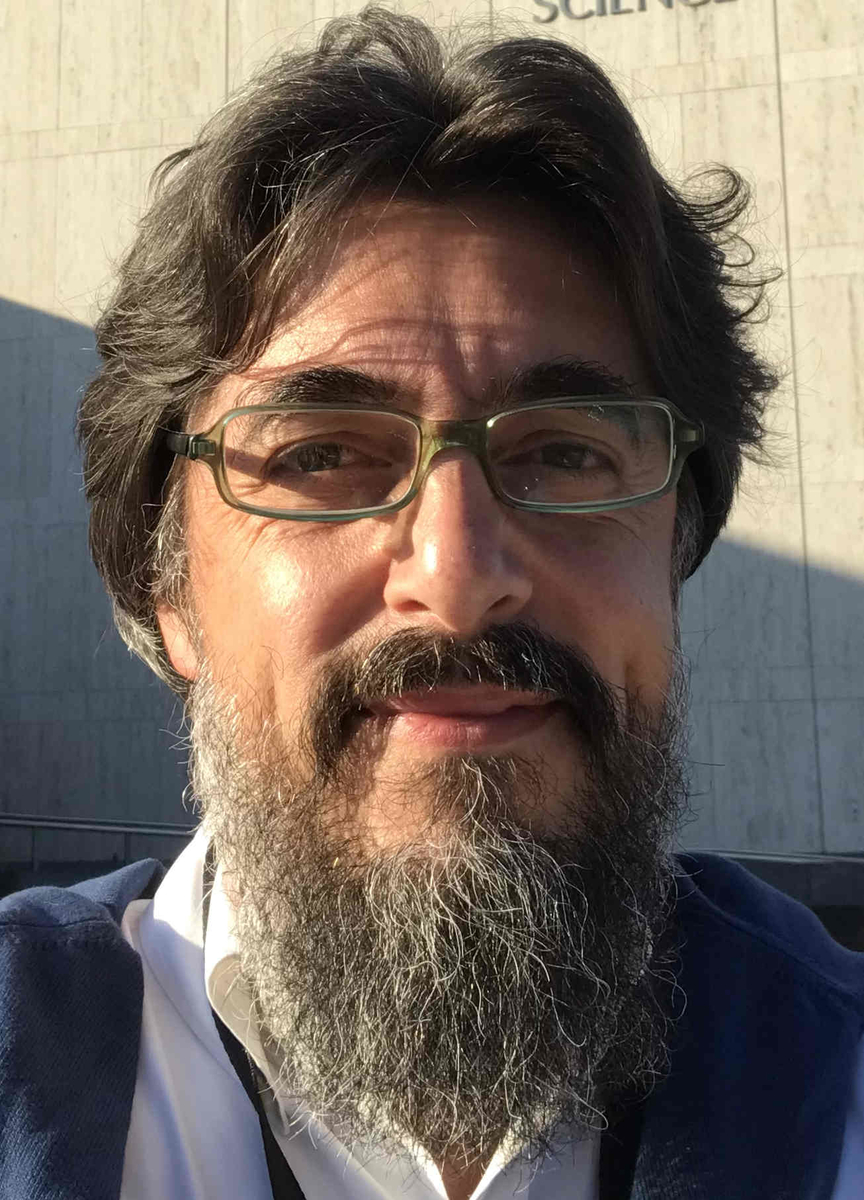
Daniele Fontanelli
Measurements Applications for Autonomous Systems
Daniele Fontanelli
Autonomous systems are nowadays having an undisputed pervasiveness in the modern society. Autonomous driving cars as well as applications of service robots (e.g. cleaning robots, companion robots, intelligent healthcare solutions, tour guided systems) are becoming more and more popular and a general acceptance is now developing around such systems in the modern societies. Nonetheless, one of the major problems in building such applications relies on the capability of autonomous systems to understand their surroundings and then plan proper counteractions. The most popular solutions, which are gaining more and more attention, rely on artificial intelligence and deep learning as a means to perceive the structured and complex natural environment. Nonetheless, besides the importance of such complex tools, classical concept of metrology, such as standard uncertainty, accuracy and precision, are still unavoidable for a clear and effective understanding of modern autonomous systems applications.
In this tutorial, some fundamental measurement concepts will be revised in light of the autonomous systems domain. In particular, we will cover the main concepts of the statistical approach to measurements that will then be applied to:
- Uncertainty analysis and synthesis for autonomous systems localisation
- Precision-based feedback for social robotics
- Distributed localisation
Daniele Fontanelli (M’09, S’19) received the M.S. degree in Information Engineering in 2001, and the Ph.D. degree in Automation, Robotics and Bioengineering in 2006, both from the University of Pisa, Pisa, Italy. He was a Visiting Scientist with the Vision Lab of the University of California at Los Angeles, Los Angeles, US, from 2006 to 2007. From 2007 to 2008, he has been an Associate Researcher with the Interdepartmental Research Center ``E. Piaggio'', University of Pisa. From 2008 to 2013 he joined as an Associate Researcher the Department of Information Engineering and Computer Science and from 2014 the Department of Industrial Engineering, both at the University of Trento, Trento, Italy, where he is now an Associate Professor. He has authored and co-authored more than 130 scientific papers in peer-reviewed top journals and conference proceedings. He is currently an Associate Editor for the IEEE Transactions on Instrumentation and Measurement and for the IET Science, Measurement and Technology Journal. His research interests include autonomous systems and human localization algorithms, synchrophasor estimation, clock synchronization algorithms, real-time estimation and control, resource aware control, wheeled mobile robots and service robotics.
_0.jpg)
Pawel Niewczas
Fiber-Optic Sensors and their Applications in Power and Energy Industries
Pawel Niewczas
Optical sensors and photonic devices have technically matured to the point that they are increasingly considered as alternatives for their electronic counterparts in numerous applications across the industry. In particular, the utilization of optical sensors has been considered for harsh, high-voltage or explosive environments where conventional transducers are difficult to deploy or where their operation is compromised by electromagnetic interference. Multi-point measurement along distributed assets is another application where fibre-optic sensors offer an advantage of a long reach and multiplexing.
This prospective tutorial will explain the motivation for research on fiber-optic sensors, highlight the basic theories underlying their operation, and present selected examples of R&D projects carried out within the Advanced Sensors Team in the Institute for Energy and Environment at the University of Strathclyde and within Synaptec – a young spin out company focussing on distributed photonic sensing for the energy sector.
The tutorial will highlight and detail specific examples of the measurement needs within the power and energy sectors and report on the novel approaches in fiber sensing to address these needs. In particular, it will cover such applications as distributed voltage and current measurement for power system metering, protection and control in the context of terrestrial and offshore energy transport infrastructure; structural health monitoring of wind turbine foundations; and measurement of the loss of loading within prestressing steel tendons used for reinforcing concrete pressure vessels and containment vessels in nuclear power stations. As the potential good solutions to these respective measurement needs, this tutorial will introduce such emerging technologies as the hybrid fiber Bragg grating (FBG) voltage and current sensors; and novel methods of fibre optic sensor packaging in metallic components for deployment in harsh industrial environments. The tutorial will present the most recent progress in these thematic areas. The goal will be to highlight great potential of optical sensors and to enrich recipients’ experience in instrumentation and measurement using alternative, non-electronic measurement methods.
Dr Pawel Niewczas is a Reader in the Department of Electronic and Electrical Engineering at the University of Strathclyde. He is leading the Advanced Sensors Team within the Institute for Energy and Environment in the same department. His main research interests center on the advancement of photonic sensing methods and systems integration in applications that lie predominantly in power and energy sectors. He has carried out a unique portfolio of research programs, generally focusing on fiber based spectrally encoded sensors, and addressing such issues as sensor design, fabrication, packaging, deployment, and interrogation in challenging environments. The current key strategic applications of his research include such areas as power system metering, control and protection; wind turbine structural health monitoring; downhole pressure, temperature, voltage and current measurement; and sensing in nuclear fission and fusion environments. He has published over 100 technical papers in this area and holds 3 granted patents. Externally, he is a co-founder and R&D Director of the spin-out company Synaptec.
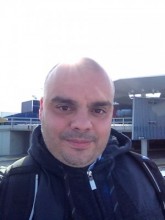
Kamel Haddadi
Microwave Microscopy for Advanced and Efficient Materials Analysis and Production
Kamel Haddadi
The MMAMA project (Microwave Microscopy for Advanced and Efficient Materials Analysis and Production − www.mmama.eu) offers a nanoscale characterization platform for the European manufacturers of coatings, photovoltaic cells, and semi-conductor circuits. This project, launched on November 1, 2017, will last 3 years. It received a European funding of € 3.99 million, allocated by the Horizon 2020 research and innovation programme.
On one hand, Manufacturing industry offers a large range of organic and inorganic based materials addressing numerous applications. The quality and performance of the final manufactured products depend strongly on their chemical/electrical/optical/mechanical properties at nanoscale as well as their arrangements at macroscale (amorphous, partially isomorph, hybrid/composite, multi-layered).
On the other hand, microwave to mm-wave nondestructive testing and evaluation methods are well established for determining electrical properties of materials. A variety of methods including far to near field free-space, guided, resonant and scanning probe microscopy offers numerous solutions for Macro down to Nano scale characterization.
In this context, the objective of this tutorial is oriented towards RF to mm-wave techniques and related instruments dedicated to nondestructive evaluation applicable to wide range of emerging materials. This tutorial will afford the participant an extensive treatment of the field of microwave characterization, its foundation, theory, techniques and related instrumentations. Additionally, the tutorial will introduce the participants to the state-of-the-art as well as the state-of-the-practice. Finally, emerging and likely future trends in this field will be introduced. The discussion will be illustrated with several real-world examples. The Tutorial is intended primarily for young scientists and engineers who are interested in learning about this emerging field, but is also useful for individuals with a more advanced understanding of related concepts.
Dr Kamel Haddadi is the head of the Transverse Nanoscale Research Activity within the Institute of Electronics, Microelectronics and Nanotechnology (IEMN), joint research unit between the University of Lille and the ‘Centre National de la Recherche Scientifique (CNRS)’. His research activities encompass the development of RF measurement techniques and systems for microwave Non Destructive Testing & Evaluation (NDT&E) purposes. He is involved in studies for electrical metrology of nanometer devices and the development of near-field microwave microscopy tools. He is in charge of microwave aspects in the frame of the French PIA Equipex Excelsior and European projects (EURAMET EMPIR, H2020 NMBP, ANR-DFG, PHC, PROCOPE). The results achieved in this context led to publication of around 100 articles in peer review international papers and conferences. He is a member of the international committees IEEE MTT-25 RF Nanotechnology and IEEE MTT-24 Microwave Systems, Associate Editor of IEEE TIM and IET SMT, TPC member in various IEEE conferences (IEEE I2MTC, IEEE Sensors, ARFTG, IEEE MARSS).

Erik Timpson
Young Professionals Best Practices in a Variety of Measures.
Erik Timpson
We need more young people to be interested in instrumentation and measurement. The hope is to partner with the current young professional representative again. So we can have a good turnout like in 2017 https://2017.imtc.ieee-ims.org/young-professionals-best-practices-variety-measures.html.
This tutorial is targeted for young professionals. It is intended to provide the best practices for a variety of traditional and professional measures, be interactive, and give tools for continued success. Traditional measurement best practices include electrical (voltage, current, impedance, etc.) and environmental (acceleration, temperature, humidity, pressure, etc.) parameters. Professional measures include career growth, depth and breadth of technical knowledge. As it is intended to be interactive, please come with questions and stories related to the title. Last, the tutorial will give an example of using the past instrumentation and measurement professionals (Nobel laureates) to inspire the future generation of professionals.
Dr. Erik Timpson is a Lead Electrical Engineer and the People Center of Excellence (COE) Leader at Honeywell Federal Manufacturing & Technologies (FM&T), which manages and operates the Department of Energy’s Kansas City National Security Campus. In his role as the People COE he is responsible for technical talent attraction, education, retention and technology oversight of 8 Focus Areas. He is a Professional Engineer, licensed in the state of Missouri. Erik has authored/coauthored more than 16 peer reviewed journal articles, conference proceedings, or technical magazine column articles. He has two patents granted and 4 pending. Earning his BS in Electrical Engineering with Honors, minors in Math, Physics, and Biology from the University of Missouri – Rolla, a MS in Electrical and Computer Engineering from the University of Missouri – Kansas City, and Ph.D. in Electrical and Computer Engineering from University of Missouri – Columbia, he has 18 years of professional industry experience.
Dr. Timpson is a member of Institute of Electrical and Electronic Engineers, Eta Kappa Nu, Kappa Nu Epsilon, and NCSLI. He has always had a love for education marked by his extensive tutoring, peer instructing, and undergraduate research at Missouri University of Science and Technology. He was the Young Professional Representative for IEEE I&M ADCOM.

Riccardo Susini
Trends in ADAS and Autonomous Vehicle Test.
Riccardo Susini
National Instruments embedded control and test systems run the automation factories around the world; our measurement and test cell systems ensure fuel-efficient, aerodynamic, and safe in aerospace and transportation solutions; our measurement and control systems ran traditional energy systems and have quickly evolved to be embedded in the largest wind farm deployments to-date controlling and monitoring the turbine speed and performance. Now these “things” are all connected. This connected intelligence can lead to incredible macro impact, every device could be hooked up to the Cloud to make our lives better – more efficient energy utilization, load balancing of resources, safer transportation systems and infrastructure and much more.
Autonomous vehicles will change the way we view transportation and even live our lives. The obvious main goal is to increase safety and reduce traffic deaths, but reducing emissions and providing better mobility solutions are also benefits to be realized. To accomplish this, new vehicles are integrating technology that helps them provide advanced driver assistance systems (ADAS) functionality and will eventually lead to fully autonomous operation. These technologies like radar, camera, and RF communication will work together with a sensor fusion approach to give the vehicle a more complete view of the world around it.
Autonomous driving and advanced driver assistance systems (ADAS) are drastically increasing system complexity: new radar, camera, lidar, and GNSS sensors all together to enable these new automotive technologies. This rapid change requires flexible test systems to deploy products quickly and safely. Because of the importance of data synchronization, it is necessary to ensure that your embedded software test environment is capable of generating both radar target information as well as video classification information deterministically and within the window that is acceptable for ADAS ECU operation. While today’s ECU’s have relatively loose tolerances, we can expect that the performance and jitter associated with this data will continue to shrink over time. The NI PXI platform is the only platform capable of generating both of these data streams in one system, while also being capable of running a real-time operating system for deterministic simulation of the world around the safety system.
Eng. Riccardo Susini - Riccardo Susini joined National Instruments in 2007 after a graduation as Engineer specializing in Automation in University of Florence. He covered several positions as responsible for Academic & Research and Industry in center of Italy, working directly with his customers to create the best performing solutions to cover all needs in terms of prototyping, V&V and production test and measurement systems. In 2018 he started a new position as NI responsible for all the distribution indirect channel in Europe and Israel: this market is predominantly connected to the research institutes where he is also specialized to support requests related to wireless and RF solutions. Riccardo Susini is candidate to executive MBA 2020 program at SDA Bocconi – School of Management – in Milan.
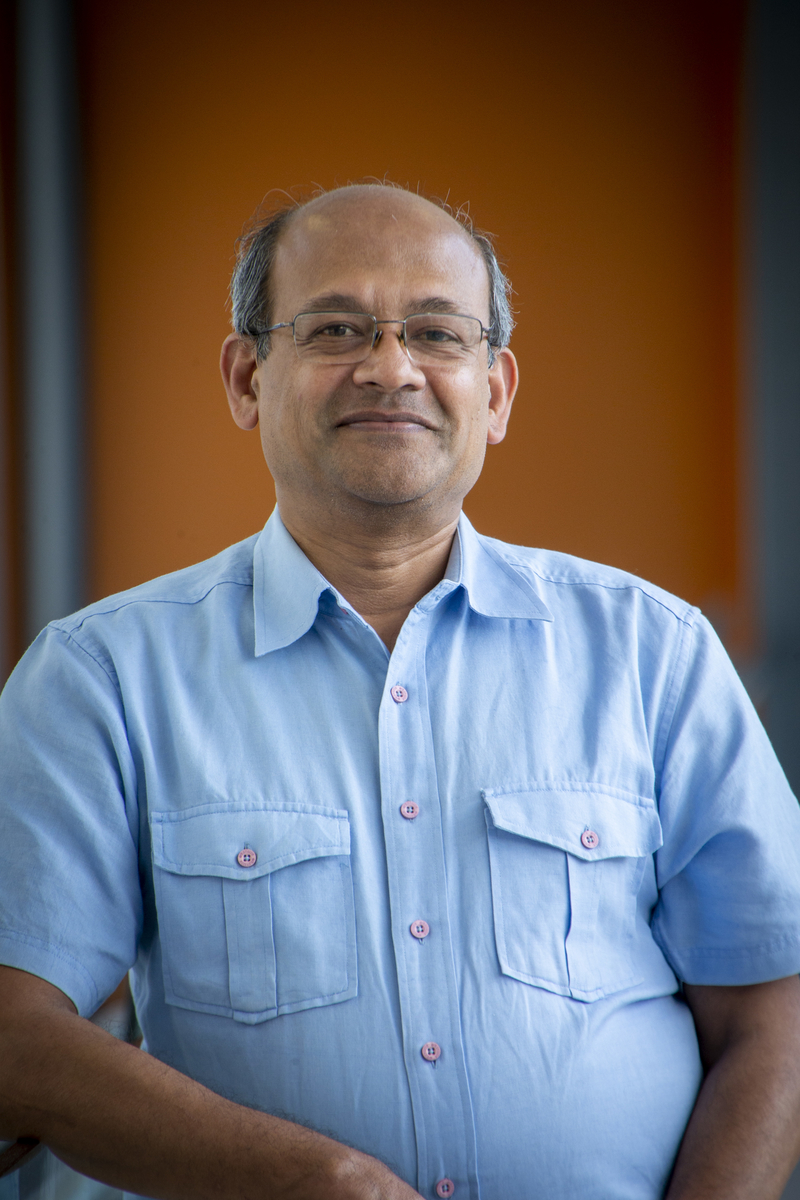
Gourab Sen Gupta
Measurement Challenges and Sensor Applications in Food and Agriculture
Gourab Sen Gupta
Sensors have wide-ranging use and application on the farm - from monitoring soil and atmospheric conditions to measuring plant growth to measuring animal health. There are enormous measurement challenges that we as engineers face when presented with the task of developing solutions for such applications. For example, how do you measure pain in an animal since it cannot orally communicate with a human being? How do you detect disease such as white-line disease in cows which makes them lame? Can you measure food texture with high resolution across a cross section which can show the spatial distribution of hardness?
In this tutorial I will
- highlight the importance of sensing and measurement in farm applications
- give an overview of the various sensors and sensing technologies that are in vogue in farm applications
- case studies of advanced sensing and instrumentation in
- Automatic condition scoring of cows
- Detecting lameness in cows
- Measuring pain in sheep
- Measuring food texture
- Detecting water leakage in very large farms
In order to feed the growing world population there is an ever-increasing pressure to improve farm productivity. Engineers have to step up to solve these sensing and measurement problems. This tutorial will be informative for students, industry and academicians.
Prof. Gourab Sen Gupta received his B.E. (Electronics) degree from the University of Indore, India, in 1982, Master of Electronics Engineering (MEE) degree from the Philips International Institute, Technical University of Eindhoven, Holland, in 1984 and PhD in Computer Systems Engineering from Massey University in 2008. During his professional career he has worked in South East Asia and Australasia, and collaborated with academics and engineers from universities, companies and research centers in such countries as Singapore, Malaysia, Korea and New Zealand. He is currently the Deputy Head of the School of Food and Advanced Technology (SFAT) and Academic Dean (Food and Engineering) at Massey University.
Prof. Sen Gupta is an established specialist in the areas of sensors and instrumentation for robotics and automation, and embedded systems. His current research interests are focused on sensor applications for assistive living, precision agriculture and food quality evaluation/monitoring. He has published over 160 papers in various journals and conference proceedings. He has authored 3 books and 8 book chapters.
He has been a guest editor of IEEE Sensors Journal, International Journal of Intelligent Systems Technologies and Applications (IJISTA), and Studies in Computational Intelligence by Springer-Verlag. He has served on the organizing committee of several international conferences. He has been invited to deliver keynote addresses and Master classes in several international forums on robotics and automation. He is a senior member of IEEE since 2005. He was a Distinguished Lecturer of the IEEE Instrumentation & Measurement Society (2012-2015). Currently he is the Vice President of the IEEE Instrumentation and Measurement Society.
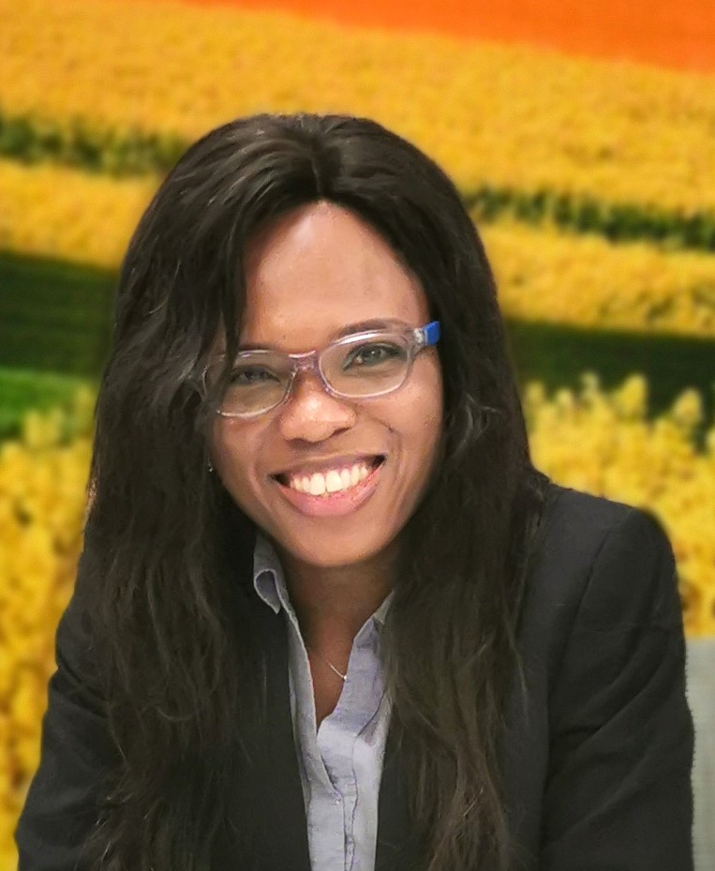
Stephanie E. Trpkov
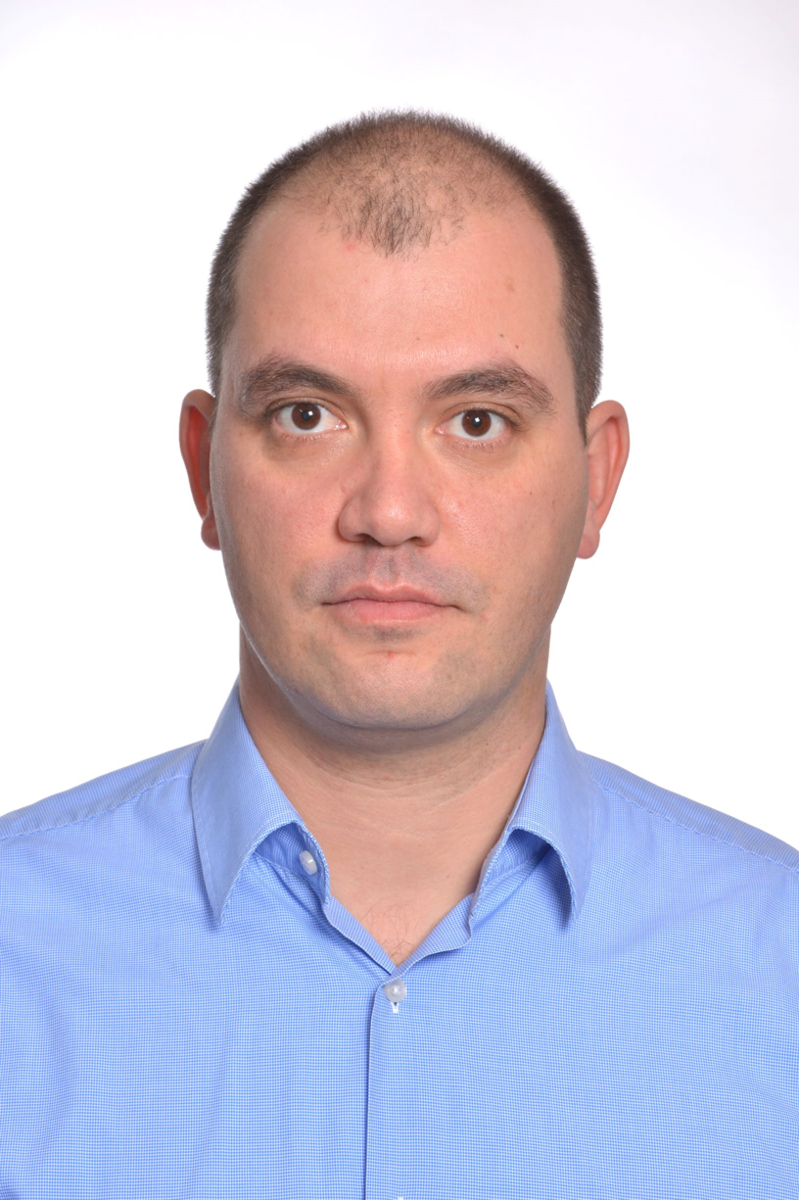
Frane Sesnic
Developing a sustainable technology business
Frane Sesnic and Stephanie E. Trphkov
The tutorial aims to provide participants with tools that would help them visualise the end-to-end process of developing a sustainable technology business. In this time of digital disruption, rising customer expectations and industrial transformation, closer linkages between theory and market applications help in creating opportunities and enhancing competitiveness.
The tutorial will present tools to accelerate product development that increase the speed of innovation of products and services and help companies navigate disruption. It would show the participants how to shorten the concept-to-product timeframe and effectively sell the story of the idea to users (customers) and investors. Activities that support formation of agile business models and fast track organic growth, will be carried out under the following sessions:
- Taking advantage of available innovation ecosystems
- Design thinking and product development
- Business modelling
- Market development, investments & financing
Outline of the tutorial content and tentative schedule
- Taking advantage of available innovation ecosystems
This first session led by Frane, will take a macro perspective by examining the role of innovation ecosystems and ways to make them sustainable. It will present a blueprint for designing an ecosystem with global impact, and highlight the roles of major stakeholders such as government, business sector, academia, etc., while looking at elements that create lasting impact, influence of market size, country and environment risks, talent pool, as well as coordinating multi helix models.
- Design thinking and product development
The second session led by Stephanie, will group participants into teams of around 5, they will be introduced to design thinking methodology and learn the process of lean product development through a joint problem solving task. At the end of the session, they will be divided into a group of six where they will role-play a pitching session for certain products.
- Business modelling
The third session led by Stephanie, will be another hands-on session where participants will re-join their initial teams and will be guided through the Business Model Canvas, for a hypothetical or real product. They will be exposed to the principles of effectuation and guided towards developing clear linkages between creating value, managing costs and ensuring stable revenue streams.
- Market development, investments & financing
The final session led by Frane, will take a look at the company journey from idea to maturity stage. It would outline main challenges for founders and teams, market development challenges, crowd sourcing and securing strategically beneficial partnerships. On the investment and financing perspective, it would examine non-traditional financing opportunities such as crowd-financing, investment options, innovative procurement models, and ways to leverage financial instruments.
Planned format of the tutorial would be a combination of lectures and hands-on sessions.
Stephanie is a strategy consultant at the World Bank in Croatia, working with policy makers to develop policies and institutional support for innovation ecosystems, competitiveness strategies and industry transition. She has worked on issues concerning, industry development, competitiveness and innovation. With her vast experience in strategy consulting, she helps private sector leaders shape their business trajectory, focusing on integrated solutions that emerge from new industry touchpoints, technology-driven change management, and innovative financing.
She is passionate about solving global issues such as climate change, via strategic industrial transformation, intelligent cities, and SME development. Having spent the past decade contributing to the development of the Smart City ecosystem in SEE, Stephanie is experienced with projects and initiatives of the European Commission DGs and routinely translates innovation programs into actionable strategies. She is a fellow of the G20 Global Solutions Initiative, a member of the European Innovation Partnership for Smart Cities and Communities (EIP-SCC), a contributor to the EU Strategic Transport Research and Innovation Agenda from the energy technology perspective.
Frane has almost a decade of experience in developing the innovation & startup ecosystem in Croatia and region. As the CEO of Zagreb Innovation Centre, he runs the biggest tech start-up hub in the region with more than one hundred tenants.
He initiated the setting up of the first pre-seed fund based on convertible loans, also was a founder of “Startup Factory”, the first start-up accelerator program in Croatia. Frane has significant experience in international projects funded by EU programs such as Horizon 2020 and Interreg. He was a key expert in several projects dedicated to setting up the local, regional and transnational start-up ecosystems.
Frane has significant entrepreneurial and investor experience. He was named as local leader for European business angel network projects aiming to improve angel investment market and stimulate cross border investment.
